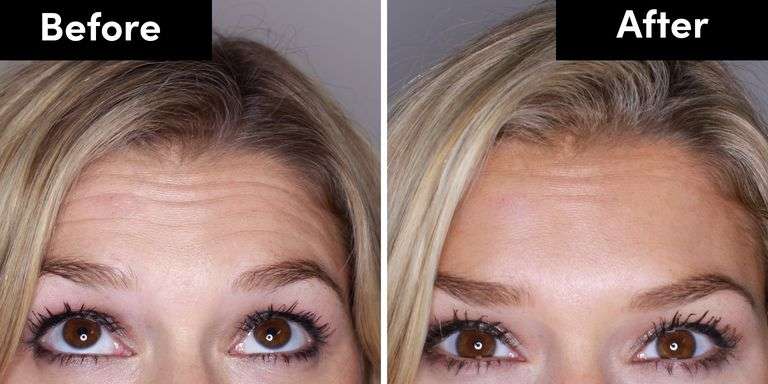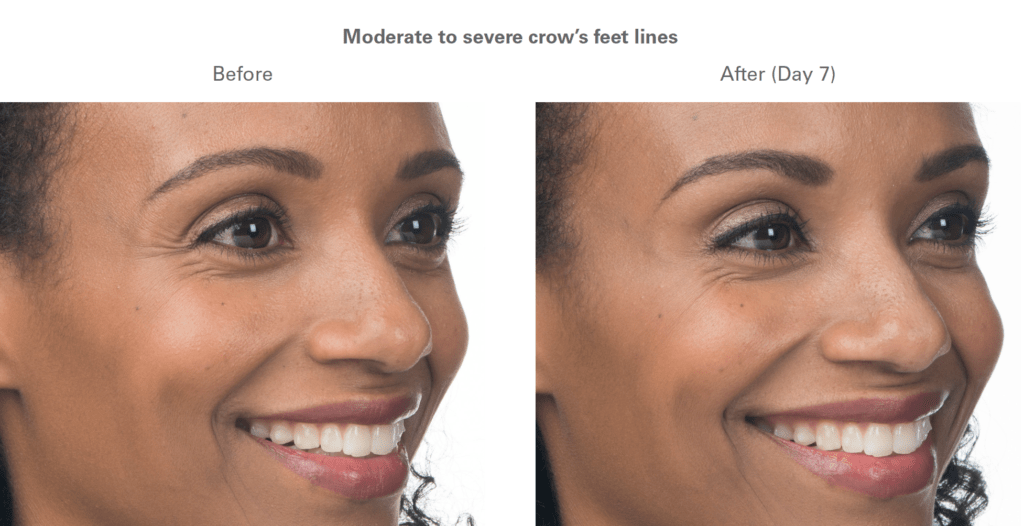Botox
What is Botox?
Botox is the trade name for a purified medicine derived from botulinum bacterium. Over the past 15 years, this potent substance has been used for the treatment of many conditions caused by muscle spasm. The first FDA approved use of Botox was for blepharospasm (eyelid twitching) treatment. Dermatologists noted that when blepharospasm patients were treated with Botox, their crow’s feet and surrounding wrinkles disappeared. Botox has since been developed into an extremely effective treatment for natural wrinkle lines that occur with muscle movement.

Botox Treatment
Botox treatment is a minimally invasive technique that has revolutionized the cosmetic approach to rejuvenation of the facial skin. Botox has set a new standard for the “wash & wear” treatment of forehead lines and wrinkles, frown lines and crow’s feet. Botox treatment is generally appropriate for the upper part of the face only, as relaxing mouth muscles interferes with normal mouth use. Therefore, “smile” lines are not usually treated with Botox. Prior to the advent of Botox and collagen treatments, surgery was the only effective procedure used to correct some of the age-related changes of the face. While fillers like Collagen and Restylane can effectively fill out areas of depression or redundant facial folds, they cannot treat the underlying cause of a deep wrinkle: muscle tension that pulls the skin inward. This is the advantage of Botox® cosmetic

Over-activity of facial muscles can produce marked expression lines or wrinkles. Botox injections relax the muscles. The intent of Botox therapy is to decrease muscle movement in order to reduce the formation of deep lines or creases. When Botox is injected into a muscle that is causing wrinkling of the skin, the overlying skin will temporarily become quite smooth resulting in a more youthful appearance
Botox treatment consists of a series of skin injections through a very small needle. There is moderate discomfort for the short injection period and slight “tenderness to the touch” may occur at treated areas for 24 to 48 hours. Redness and/or swelling are typically minimal. Botox patients can reasonably expect to return to work or attend social engagements immediately following their treatment
The full effect of Botox is usually not apparent for five to ten days after the treatment. The duration of the Botox effect varies with each individual. Botox is usually metabolized in approximately four to six months. Patients may choose to have maintenance treatments. The interval between re-treatments may increase with ongoing maintenance treatments. Some patients can be maintained on yearly treatment sessions.
The procedure involves injecting Botox in the area to be treated with a very tiny needle. The actual treatment takes approximately 15 minutes. Botox treatment requires no recovery time and has a very low incidence of side effects. The most common side effect is bruising at the injection site, but this is uncommon, minimal and temporary. Botox injections to reduce frown lines on rare occasions may temporarily cause eyelid drooping. In the rare case when this occurs, it is typically noticed in the first week or two after treatment and usually resolves within four weeks. If eyelid droop occurs, a medication may be prescribed to help alleviate this temporary condition.

